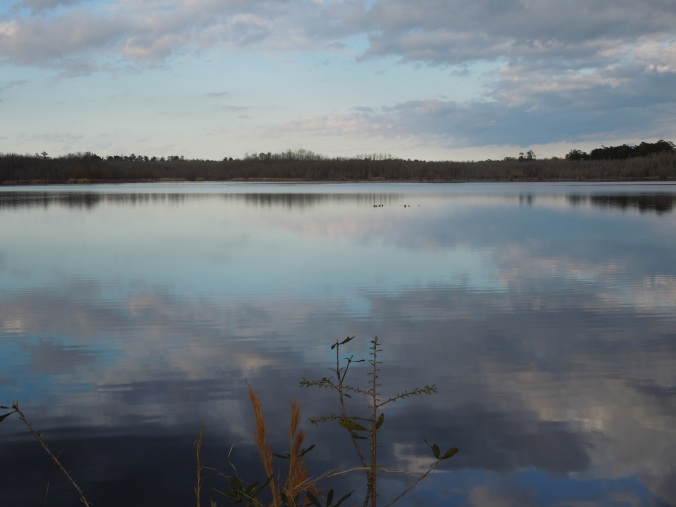Boykin, SC, a rural community of 100 people located east of Columbia, is known for an eclectic Christmas parade, a grist mill that began operation in the 18th century, a skirmish that took place in the waning days of the War Between the States, a shop that sells handmade brooms and a handful of small restaurants housed in 19th century structures.
It’s also the site of the Boykin Mill Pond tragedy, which occurred on May 5, 1860, when at least two dozen individuals drowned while on a pleasure cruise.
More than 50 people, including several young children, set out on a flatboat on the 400-acre pond. The disaster began when the boat was said to have struck a stump.
Ralph Leland Goodrich, a New Yorker teaching in Camden in the early months of 1860, detailed the events in his diary: “No immediate danger was apprehended, but then the boat began to take on water. Watching from shore, their friends gradually stopped laughing and eating and then began to panic. Some few tried to swim out to them but it was too late. Most of those on the boat were young women and girls, whose skirts became extremely heavy as the boat began to sink. The boys on board tried to help, but most went down in a single mass, clinging to each other as drowning victims do.”
It’s possible the disaster might have been averted had the passengers not panicked, but when they noticed the flatboat taking on water, everyone moved en masse to one end and the boat tipped, dumping all into the water.

Gravestone of Mary Ann Young in Rembert Methodist Church cemetery, which details her death at Boykin Mill Pond, May 5, 1860.
Rembert Methodist Church
The names of the individuals who lost their lives in the Boykin Mill Pond tragedy as well as Goodrich’s details are part of CSI: Dixie, a project of the Center for Virtual History at the University of Georgia, which collected 1,582 coroners’ reports from six Upstate South Carolina counties for the years 1800-1900.
The findings of the coroners’ inquest for the victims of the Boykin Mill Pond tragedy is short, if not sweet.
For Amelia A. Alexander, 20, of Camden, SC, it reads: “… upon their oaths do say that the said Amelia A. Alexander came to her death by accidental drowning in the millpond of A.H. Boykin … by sinking of a Flat caused by the weight of between fifty-three & fifty-six persons.”
At least four sets of siblings lost their lives in the tragedy, including Samuel Young, 7; Mary Ann Young, 11; and Hollie Young, who would have turned 19 the following day.
Goodrich wrote of following a wagon-load of four bodies that “all went to the same house,” according to CSI: Dixie.
He helped dress the corpses as the mother “whose almost every child was gone,” wailed ‘“& these too, & these too?’” over and over. Her “grief could not be measured,” he later wrote.
Several of the victims are buried in Camden’s Quaker Cemetery while a handful of others are buried in the graveyard at Rembert Methodist Church, in neighboring Lee County. Others were buried in family plots whose location is unknown at present.
The number of deaths isn’t definitive; while at least one slave was among the dead in the coroner’s report, it is believed others may have been onboard and lost their lives, as well, but gone uncounted.
(HT: Waldo Lydecker’s Journal)
(Top: View of Boykin Mill Pond; below: grist mill that gets power from Boykin Mill Pond.)


Not that long ago in family history terms…
No, and not a public mention of it in a town where 24 deaths would have represented one-quarter of the entire population if all had been from there.
I’ve put Boykin Mill in several books and made mention of this tragedy that had to be unbearable.
I’ve long been aware of the tragedy, but coming across a couple of the victims’ gravestones recently in Quaker Cemetery made it more tangible.
Family History Lore has it that my Great Great Grandfather, William Partin – who was a local fiddle player of some renown was going to play at the dance and but late getting there. By being tardy, he too may have avoided this tragic death. He later served as a private in Company G. 20th S.C.V.I., with Kershaw’s Brigade along with his brother. The first information was passed to me by an older cousin of my mother who has since passed. The later information can be confirmed by The muster rolls in the History of Kershaw’s Brigade book by D. Augustus Dickert first published in 1899 and by the NARA Archives Civil War Soldiers Data Base. William Partin of Sumter was born in 1832.
A fortunate circumstance for several generations, it would appear. It would appear your ancestor had more than a little good fortune, missing both the mill pond tragedy and surviving the war. I’m familiar with Dickert’s book; very interesting and informative. I appreciate you taking time to write.
Do you know what occasion brought all the people together on that fateful day.